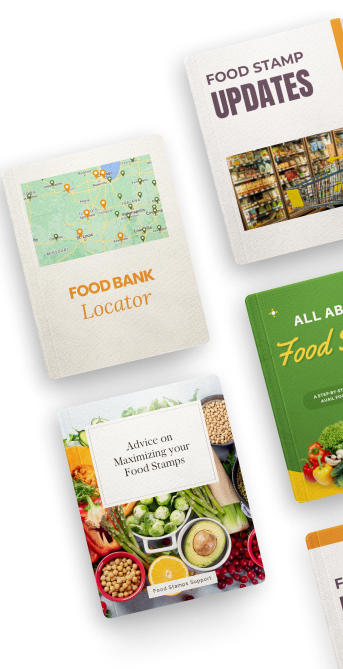12 Eye-Opening Facts about Food Stamps Support Programs: SNAP/EBT Unveiled!
Food stamps support programs are vital in addressing food insecurity and assisting individuals and families in need. The Supplemental Nutrition Assistance Program (SNAP) and the Electronic Benefit Transfer (EBT) system have become crucial lifelines for millions of Americans. In this article, we delve into 12 eye-opening facts about these programs, revealing their impact, benefits, and how they are shaping the nation's fight against hunger.
Breaking the Hunger Barrier
In a nation as prosperous as ours, realizing hunger remains a persistent issue for millions of individuals and families is disheartening. Thankfully, food stamps support programs such as SNAP/EBT are making significant strides in breaking the cycle of hunger. These vital programs provide essential nutrition assistance to those who need it most, ensuring they can access a steady supply of nutritious food. By addressing the root causes of food insecurity, SNAP/EBT programs play a crucial role in transforming the lives of countless low-income Americans.
Wide-reaching Assistance
The impact of SNAP/EBT programs must be considered when addressing the complex issue of food insecurity. With over 40 million people in the United States receiving assistance through the Supplemental Nutrition Assistance Program (SNAP), these programs have become a lifeline for individuals and families nationwide. Through the Electronic Benefit Transfer (EBT) system, eligible participants receive a dedicated allowance to purchase essential groceries, enabling them to put nutritious meals on the table for themselves and their loved ones. By providing such widespread assistance, SNAP/EBT programs serve as a vital safety net, ensuring that those in need do not have to face the harsh realities of hunger alone.
Food Security Matters
Food insecurity affects individuals, from physical health challenges to emotional and social hardships. The positive impact of SNAP/EBT programs in reducing food insecurity is well-documented. Studies consistently show that households participating in these programs experience significantly lower food insecurity rates than their non-participating counterparts. By bridging the gap between limited resources and nutritional needs, SNAP/EBT programs provide stability and security. This crucial support empowers individuals and families to focus on other aspects of their lives, such as education, employment, and overall well-being.
Healthier Eating Habits
Access to healthy and nutritious food is fundamental to leading a vibrant and fulfilling life. SNAP/EBT programs recognize this need and actively contribute to fostering healthier eating habits among participants. By offering access to a diverse range of fresh fruits, vegetables, and other nutritious foods, these programs empower individuals and families to make choices that positively impact their overall health. Through education initiatives and collaboration with community partners, SNAP/EBT programs promote nutrition education and guide balanced meal planning. By fostering a healthier eating culture, SNAP/EBT programs combat food insecurity and contribute to long-term improvements in public health.
Boosting Local Economies
The impact of SNAP/EBT programs extends far beyond alleviating hunger and improving individual well-being. These programs play a pivotal role in boosting local economies. For every dollar spent through SNAP, there is a significant multiplier effect. As program participants redeem their benefits at authorized retailers, it stimulates economic activity by supporting local businesses. This, in turn, helps create and sustain jobs, generate tax revenue, and contribute to the overall economic vitality of communities. SNAP/EBT programs foster a win-win scenario by bolstering local economies, benefiting program participants and the wider community.
Disaster Relief
During times of natural disasters, emergencies, or other unforeseen events, SNAP/EBT programs prove to be an essential resource for affected individuals and communities. These programs play a critical role in disaster response and recovery efforts. By swiftly providing food assistance to those in need, SNAP/EBT programs ensure that individuals and families can access vital nutrition during challenging times. This helps meet their immediate needs and provides a sense of stability and support as they navigate the aftermath of a disaster. SNAP/EBT programs demonstrate their resilience and commitment to assisting vulnerable populations in recovery and rebuilding by being a reliable lifeline in times of crisis.
Technology Transformations
The advent of the Electronic Benefit Transfer (EBT) system has revolutionized the way food assistance programs operate. EBT has replaced traditional paper food stamps, providing recipients with a convenient and secure way to access their benefits. Participants can make purchases at authorized retailers through an electronic card, similar to a debit card transaction. This technological transformation has streamlined the process, reducing administrative burdens and ensuring greater accuracy in benefit distribution. By embracing modern technology, SNAP/EBT programs have enhanced efficiency, improved user experience, and empowered participants to access their benefits quickly.
Conclusion
SNAP/EBT programs are transformative in combating food insecurity, promoting nutrition, and supporting individuals and families in need. From ensuring access to healthy food options to stimulating local economies, these programs impact communities nationwide significantly. Understanding the key facts and aspects of SNAP/EBT can raise awareness and foster support for these vital food stamps support programs, empowering more Americans to lead healthier, more secure lives.

















